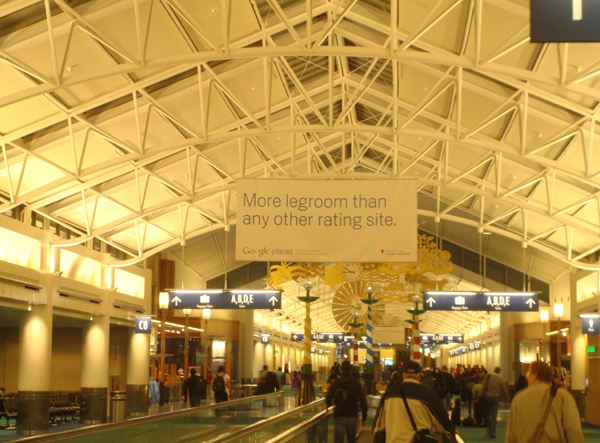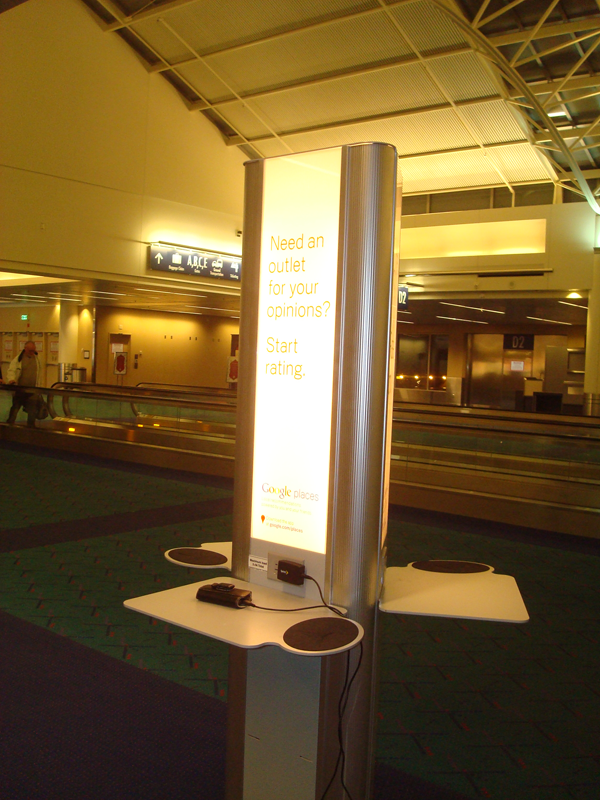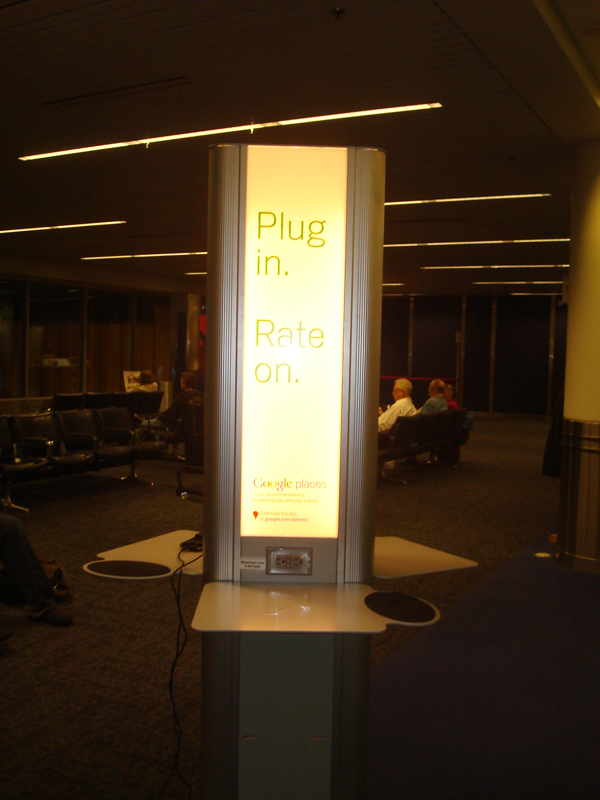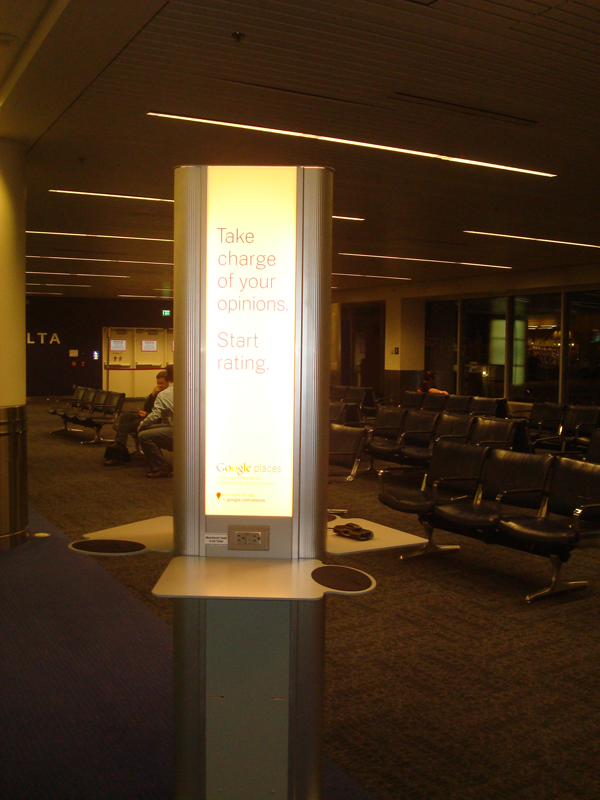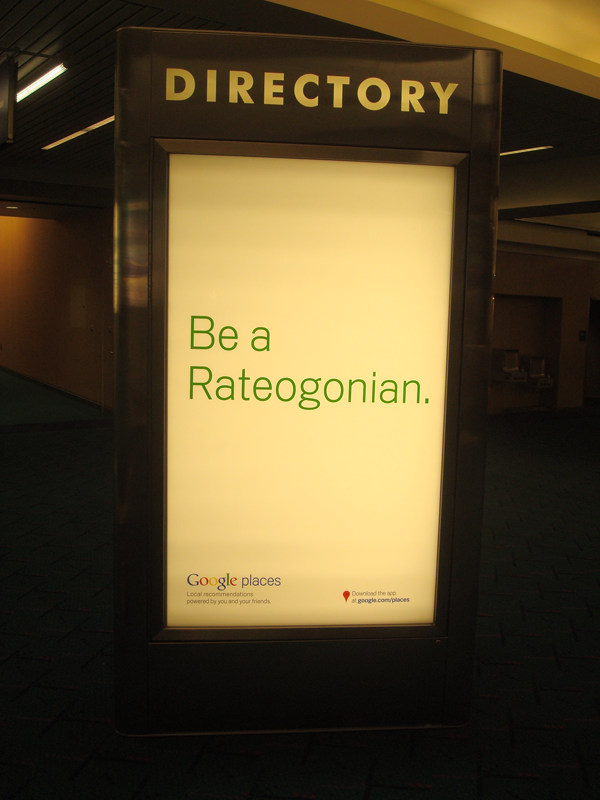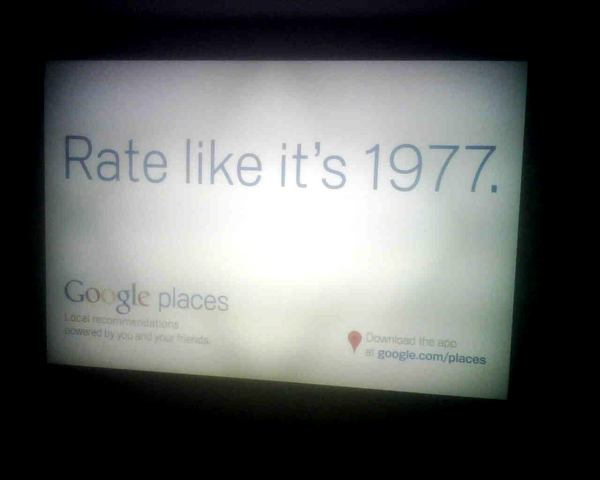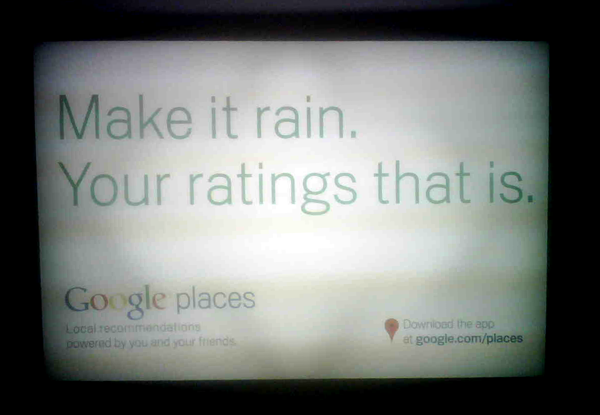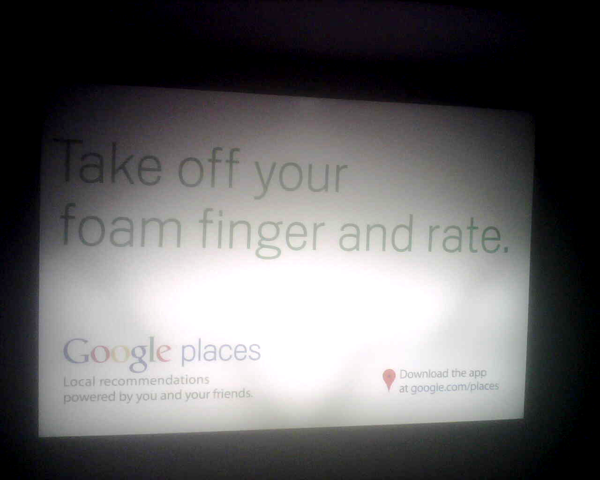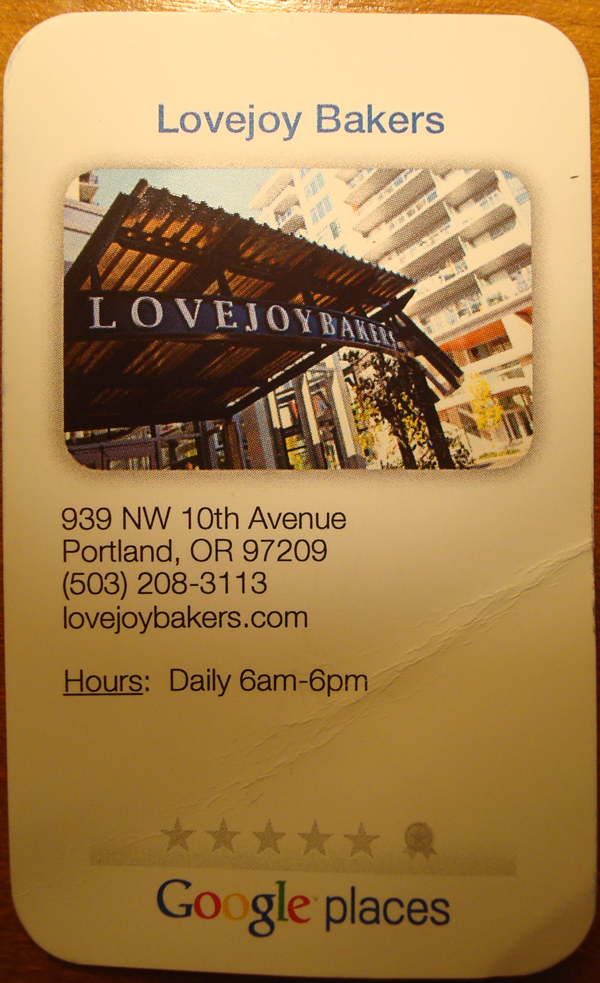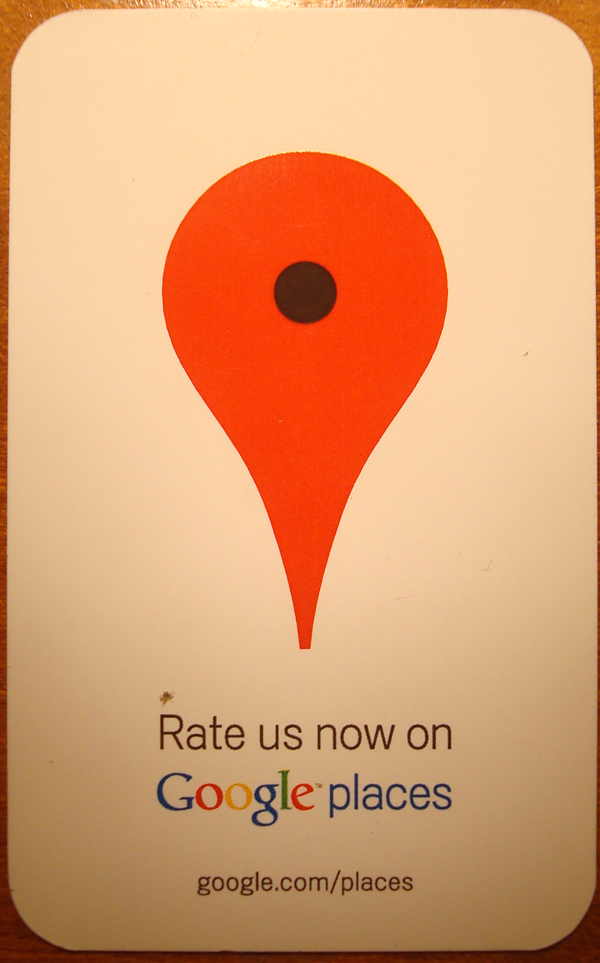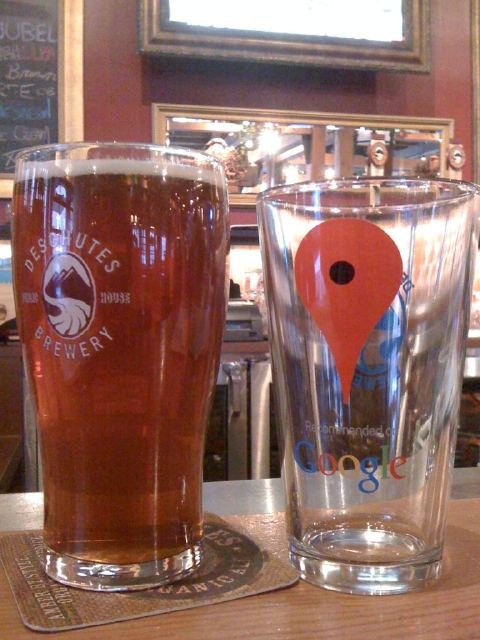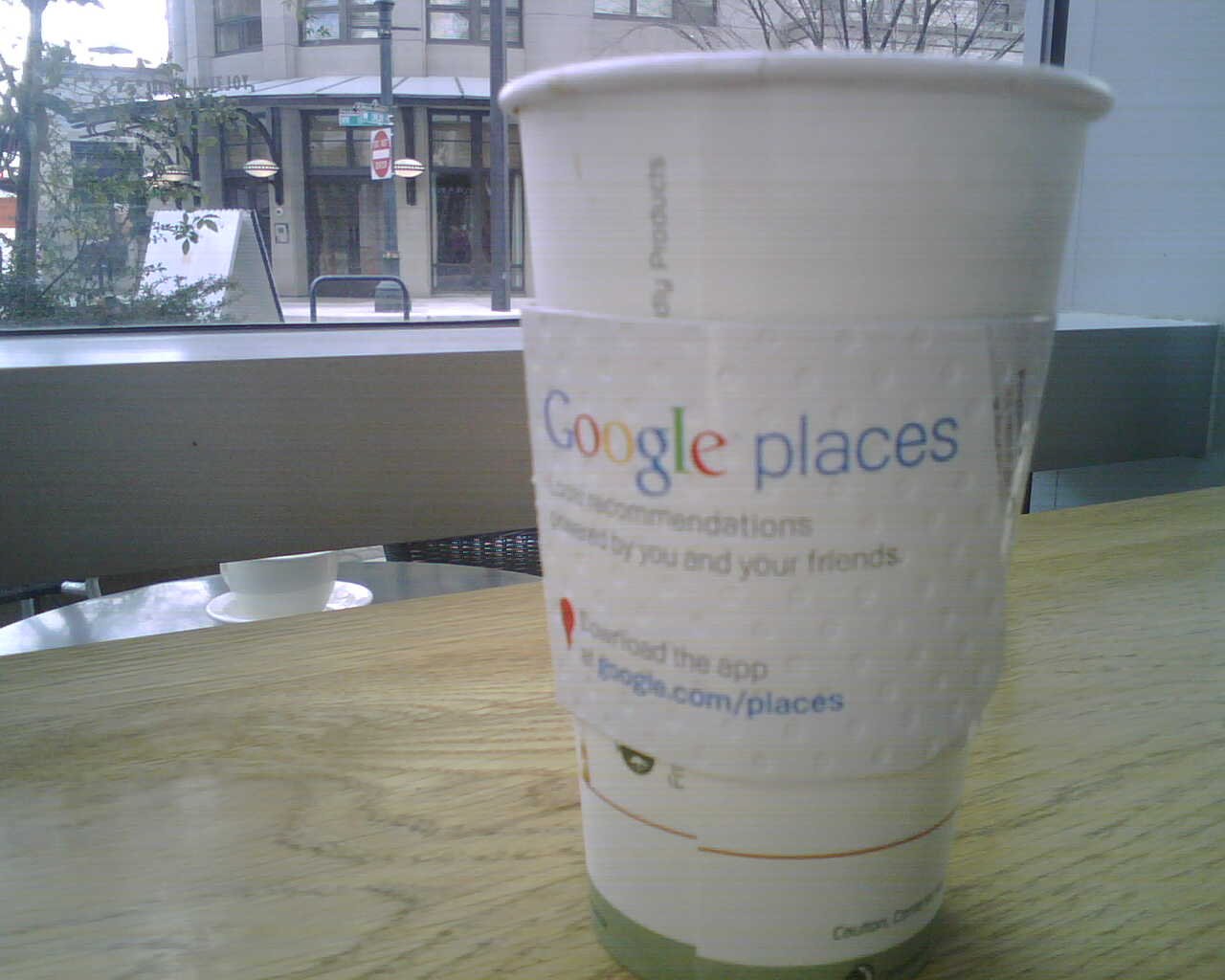Google Brings Portland HotPot Campaign to a Rolling Boil
Last month I highlighted a few of the on-the-ground efforts Google’s been making here in Portland, and I thought it was about time that I do a follow-up, now that the campaign has been underway for a significant amount of time.
Consumer Impact
Google has done an excellent job hitting two of the most visited (and most-loved) spots among Portlanders—The Rose Garden and PDX Airport—with the equivalent of billboard advertising.
For someone in Local Search, it’s been thrilling to see this kind of major traditional advertising campaign, and I’ve felt that Google’s placements have been impossible to miss. They did their homework on where to show the ads, and used headlines that resonate with Portlanders in both tone and content (“1977” is an extremely well-known number in Portland–it references the last time the Blazers won the NBA Championship). I apologize for the last photo which is unreadable…perhaps Google’s best line…something like “I wish I was a little bit taller. I wish I was a ratings baller.”
But my Blazer-fan friends outside the search industry, and even one inside the search industry, hadn’t seen the RG ads, and a couple of frequent travelers hadn’t seen the kiosks at PDX. Judge for yourselves, but I find the creative of the ads themselves pretty compelling, so I think this (lack of) observation may say more about the effectiveness of the medium than anything else.
Google’s also taken out some highly visible ads on OregonLive.com (which, lucky for them, started showing up right during an undoubtedly heavy traffic period for the site, surrounding the Ducks’ trip to the BCS National Championship game). Surprisingly, I have not seen any print ads in the Willamette Week or Portland Tribune, which seem like Google’s most significant and perhaps only missed consumer marketing opportunities on the ground here. Willy Week and the Trib are the two weekly “rags” that cater to the Portlandia crowd—presumably Hotpot’s most likely adopters.
I’ve also seen a pretty darn exhaustive use of banner ads as part of Google’s display network that presumably were geo-targeted around my IP address or based on my web history in some way. As a side note, I’ve found this to be awfully close to the line of acceptable targeting and it’s made me uncomfortable to see the ads on sites in Google’s display network that have nothing to do with Portland. At least with Facebook, there’s the expectation that advertisers are targeting you based on this information. I’m not sure I have the same expectation when I see these ads on Huffington Post or OKCupid, for example.
Just in the last week, I’ve noticed a Facebook ad campaign, a Hotpot Facebook page currently dedicated to Portland outreach, a HotpotPDX Twitter account, and perhaps most impressively, some very creative ad placements on coffee shop sleeves and a sponsored event at Deschutes–one of Portland’s most popular microbreweries (interestingly, it’s more popular among tourists than locals, however).
It’s unclear what the outcome of this “Hotpot Jackpot” will be, but I’ll let you know if I need to find 9 friends at the last minute 🙂
Business Impact
Google’s efforts in the business community strike me as much more similar to how Yelp starts to seed itself in new cities than their consumer initiatives have. After all, Yelp explicitly discourages review solicitation, which is exactly what Google is doing.
On the business side, though, Google reps are visiting some of the most popular spots in the highest-trafficked areas with what I would say is their first earnest attempt at a feet-on-the-street salesforce (though they’ve tried something much less coordinated with college interns before). Except instead of one or two elite Scouts, they seemingly have tens or even hundreds of them. The businesses they’re starting with are RIGHT in Yelp’s sweetspot: namely restaurants, spas, and other lifestyle/entertainment-type businesses.
Come to think of it, I guess these businesses are in everyone’s sweetspot (including the Daily Deal players) since they’re the most visible to the broadest range of consumers. Joanne Rollins, proprietor of a local frame shop I recently patronized, mentioned that a Google-commissioned photographer spent over two hours in her shop in November, just taking photos. And they’re branching out–even my friend Scott Hendison who runs a hosting company noticed it this past week.
In talking to a number of business owners and using my eagle eye to survey storefront windows, anecdotally I would estimate that 5-8% of the retail businesses in my neighborhoods (NW Portland / Pearl District) have received a Places kit.
What does that kit include? How about custom-printed business cards, a very large (though quite spartan) pushpin sticker, and in some cases, specialized marketing materials like co-branded beer glasses and coffee cup sleeves (see above).
That 5-8% may seem like a pathetically small number but in my opinion it’s actually quite impressive. Even my local barber shop–whose owner self-admits she’s terrible at marketing–has put up a red-and-white Places sticker in her window. I’ve certainly seen far more Places stickers than ‘Check Us Out on Yelp’ or ‘Like Us on Facebook,’ for example. In fact, the closest comparable saturation I’ve seen would probably be the old ‘Best of Citysearch’ stickers which were designed to function more like awards than for Local-Social marketing awareness.
Google’s “pitch” has been impressive to the business owners I’ve talked to. I spoke with one woman who helps manage a local “chain” of several high-end restaurants. What impressed her the most? How slick and expensive the marketing materials looked.
What’s less clear is how effective the pitches have been…i.e. whether they will encourage business owners to advertise with Google, or even encourage them to put stickers in their windows to indirectly get Google a larger corpus of user reviews.
The woman above wasn’t even sure that her restaurants would be able to use the kits because they’re extremely high-end, and she felt that the kits might vaguely diminish their brands in some way. And when I queried her on the kinds of things the Places rep was offering them, she couldn’t list out even a single bullet point. I’m not sure if this was due to lack of understanding of the space, or the rep’s ability to translate internet-speak for her.
Has It Worked?
Although Mike Blumenthal will be publishing some extremely compelling data in the next couple of weeks—subscribe to his blog if you haven’t already—I’m not sure the end result is going to meet Google’s expectations. There still seems to be a significant lack of awareness among a lot of the general public, and certainly an apathy about the importance of leaving reviews for businesses, even among the search community.
Not to get all theoretical on you, but one thing that I think continues to plague Google is the lack of a clear brand for all of its location-sensitive products—which sounds like a trivial thing, except the Local search space is already so fragmented for consumers, and so confusing for business owners, that it hurts the overall effectiveness of a campaign like this.
Over the years, we’ve seen Google Maps change to Google Local, and then back to Google Maps. Then the Local Business Center came out and was renamed to Google Places. Just as business owners have started to get the difference between Paid and Organic search results, Place Search came out and threw in another moniker they’ve got to keep track of.
Then Hotpot came out, which apparently fits into Google Places somehow on the consumer side, but the stickers and business outreach that Google is doing are all being branded as Places on storefronts. Google’s ads in the Rose Garden and PDX Airport all say Google Places, but the ones on OregonLive tout Hotpot more aggressively.
Clearly, Google has many more product offerings than most of their competitors (possibly save for Facebook) so it’s a bit of a challenge, but at some point a good umbrella sub-brand where business owners and consumers alike can find all of these location-sensitive offerings is going to be important.
And then, there’s the very Googly-ness of Google itself. Their campaign in Portland has gone WAAAAY out of the way to be conversational, friendly, approachable, and at times irreverent. But according to those of my friends who have the iPhone (I’m waiting until February 10th for mine), the app itself is extremely bland and lacks the charisma of competitors’ like Yelp, Foursquare, Where, and others. I’m just not sure it’s in Google’s DNA to make a “fun” and social user experience.
We know that what is in Google’s DNA is algorithm, algorithm, algorithm, and scalability, scalability, scalability. I have no doubt they are assiduously testing the messages and placements that resonate with both consumers and business owners here in Portland so that they can learn what works and what doesn’t as they roll out similar campaigns in other markets. But I think that the fun, social experience of the Places app is going to be essential if it is going to have long term staying power, and gain adoption without the kind of astronomically expensive blanketed marketing that Google is trying here.
All in all, I’ve been very impressed with how Google has executed towards both consumers and in the business community. It’s the expense of such a campaign, and its scalability to other markets, that I question.
Full Disclosure: A Google Places representative will present at Local University Portland on February 22, but Google did not know that I would be writing this column, nor did they review any of the content before it was published. Also, I am publishing this article from Lovejoy Bakery in the Pearl District — one of my favorite spots in Portland — and one that Google happened to visit!

